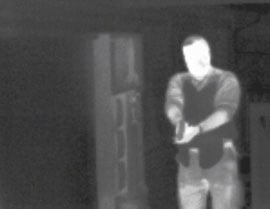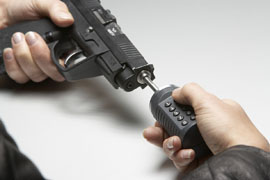European Police Congress For two days this week, the Congress Centre in downtown Berlin was one of the safest places on earth. The GDR-style building was packed with policemen, army officers, and private and public security experts.
Uniform-wearers from various countries loitered in the lobby, talking about their problems with informers and sharing anecdotes, while chain-smoking men in trenchcoats (honestly) wandered from stall to stall, taking detailed notes. Involuntarily, one felt intimidated by the sheer number of potential protectors.
The European Police Congress is mainly a trade fair, sponsored by T Systems, EADS, and SAP, among others. Police from various countries, including Albania and Sudan, had a look at the latest in security equipment.
 The overarching theme of this year's gathering of "the international security community" was counter-terrorism - something the normal copper on the street luckily has little experience with. They were more interested in gadgets like a new thermal imager, which allows law enforcers to detect people in the dark or in camouflage.
The overarching theme of this year's gathering of "the international security community" was counter-terrorism - something the normal copper on the street luckily has little experience with. They were more interested in gadgets like a new thermal imager, which allows law enforcers to detect people in the dark or in camouflage.
Locked and loaded
The infrared camera has a digital zoom function, perfect for "long-range night time surveillance", as the manufacturers put it.
Another hot topic was how to secure police weapons against unauthorised use – if, in the future, a criminal steals a policeman's gun, it should be virtually impossible for him to use it.
 A German producer of digital security systems for firearms has launched a blocking device that is inserted into the barrel and can only be removed with a pin and/or fingerprint authentication. The biometric interface can be worn around the wrist, and transmits the authentication signal via radiowave propagation.
A German producer of digital security systems for firearms has launched a blocking device that is inserted into the barrel and can only be removed with a pin and/or fingerprint authentication. The biometric interface can be worn around the wrist, and transmits the authentication signal via radiowave propagation.
But thermal imaging and guns apart, the law enforcement world has many similarities with the corporate world.
Apparently, the key recent innovations have more to do with the background IT systems, than with the mobile equipment. Using digital radio transmission, police on the street can have direct access to databases. The West Yorkshire police now uses Blackberry handheld computers in a pilot scheme, and alternative devices are becoming more and more common.
